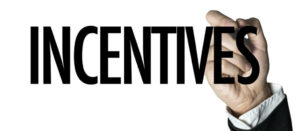Contents
- 1 Designing And Managing Incentive Compensation
- 2 What Is The Need For Incentive Compensation?
- 3 How To Design An Incentive Plan?
- 3.1 Define The Aim Of Your Compensation Plan
- 3.2 Develop A Plan To Reward Employees Who Meet The Criteria
- 3.3 Type Of Incentive That Can Be Used
- 3.4 How Much Will Be The Reward?
- 3.5 List Members Of The Company Who Will Receive The Incentive
- 3.6 Manage Incentive Compensation
- 3.7 How Much Money Should I Set Aside?
- 3.8 How Do I Determine Bonuses?
- 4 What Is The Best Way To Deliver Incentives?
- 5 What May Happen In The Long Run If Employees Work More?
- 6 Types Of Incentive Compensation
- 7 Pros/Cons Of Each Type Of Incentive Compensation
- 8 Benefits Of Incentive Compensation To Company
- 9 A Word From MantraCare
Designing And Managing Incentive Compensation

Designing and managing incentive compensation is a very important part of the business. It’s the best way to motivate employees to work hard for you because it gives them an opportunity to make more money if they do their job well. The first step in designing an incentive plan is deciding what your desired outcome is-whether that be attracting top talent or encouraging high performance. Once you’ve decided on the desired outcome, it’s time to make a list of the criteria that will be used for awarding incentives-these could include customer satisfaction, product quality, and revenue generation. With this information in hand, you can design an incentive plan that will reward employees who meet the criteria.
What Is The Need For Incentive Compensation?
Incentive compensation is designed to encourage employees to work hard for you. It is the best way to motivate your employees because it gives them an opportunity to make more money if they do their job well. The first step in designing an incentive plan is deciding what your desired outcome is-whether that be attracting top talent or encouraging high performance. Once you’ve decided on the desired outcome, it’s time to make a list of the criteria that will be used for rewarding employees-this could include customer satisfaction, product quality, and revenue generation.
How To Design An Incentive Plan?

With this information in hand, you can design an incentive plan that will reward employees who meet the criteria.
1. Define the aim of your compensation plan
2. Make a list of criteria that will be used for awarding incentives
3. Design an incentive plan that will reward employees who meet the criteria
Define The Aim Of Your Compensation Plan
The first step is to define the aim of your compensation plan, which could be to attract and retain top talent or to encourage high performance. Once you’ve decided on the desired outcome, it’s time to make a list of the criteria that will be used for awarding incentives-these could include customer satisfaction, product quality, and revenue generation. With this information in hand, you can design an incentive plan that will reward employees who meet the criteria.
list of criteria that will be used for awarding incentives
What are the criteria that will be used for rewarding incentives?
The most common criteria for rewarding employees are customer satisfaction, product quality, and revenue generation. With this information in hand, you can design an incentive plan that will reward employees who meet the criteria.
Develop A Plan To Reward Employees Who Meet The Criteria
The goal of designing and managing incentive compensation is to be able to distinguish which employees will receive an incentive and how much they will be rewarded for their efforts. It’s time to develop a plan so that you can determine what types of incentives can be given, which members of the company will receive the incentives, and how much they can be rewarded.
Develop a plan to reward employees who meet the criteria. This could include determining what types of incentives can be given, which members of the company will receive the incentives, and how much they can be rewarded for their efforts.
Type Of Incentive That Can Be Used
Types of incentives that can be given include cash, bonuses, stock options, and insurance policies. The plan should also define the time period over which the incentive will be awarded-this could range from a few weeks to a year or more.
How Much Will Be The Reward?

The final part of designing and managing an incentive compensation plan is determining how much can be rewarded. This could include cash, bonuses, stock options, and insurance policies. The compensation plan should also define the time period over which the incentive will be awarded-this could range from a few weeks to a year or more.
Designing and managing an effective incentive compensation plan involves making sure that those who will be rewarded for their efforts are sufficiently motivated and know what is expected of them. Once every aspect of the program has been laid out. It’s time to announce and communicate the new plan to employees and managers. So that everyone knows what they need to do in order to receive a reward.
List Members Of The Company Who Will Receive The Incentive
Designing and managing an effective incentive compensation plan involves making sure that those who will be rewarded for their efforts are sufficiently motivated and know what is expected of them. Once every aspect of the program has been laid out, it’s time to announce and communicate the new plan to employees and managers so that everyone knows what they need to do in order to receive a reward.
An important part of designing an effective compensation plan is determining who should receive the incentives. This could include managers, senior-level employees, or even employees with specific skills such as engineers and researchers. The plan should also define the time period over which the employee receives incentives. This could range from a few weeks to a year or more.
The last step is to let employees know about the incentive compensation program by announcing it publicly. This should include making sure that everyone receives the same guidelines about the plan, which means that it should be presented in a formal meeting or through written materials. A compensation plan can also be communicated to managers so they are aware of what is expected of them as well as their employees.
Manage Incentive Compensation
 Most people believe that incentive compensation is one of the best ways to motivate employees. They may also be one of the easiest ways since incentives can come in many forms and only a small amount of effort is needed to design them. When designing an incentive compensation package, it is important to take into account where employees are coming from and what they value most.
Most people believe that incentive compensation is one of the best ways to motivate employees. They may also be one of the easiest ways since incentives can come in many forms and only a small amount of effort is needed to design them. When designing an incentive compensation package, it is important to take into account where employees are coming from and what they value most.
Some companies have a set budget for monthly bonuses which coincides with the company’s accomplishments over the past month, while others allocate an equal amount per employee each month. It is important to know what motivates employees in order to create a well-designed plan.
Make sure you determine your intent before designing your initiative so you know how big you want it to be. If you want to motivate your employees, then you must design a plan that will benefit them in some way.
How Much Money Should I Set Aside?
In order to create an incentive compensation plan, you need to determine how much money you are going to allocate per month/quarter/year. It is best to choose a number that will help motivate your employees, but not break the bank. A good rule of thumb is to take the average monthly income of your employees and divide it by 12. This should give you an idea of how much money you need to set aside for incentives every month/quarter/year.
How Do I Determine Bonuses?
Determine what you value most in your employees. Do they value money the most or their time off? Do you reward attendance or punctuality? Make a list of what matters to them and how much it means to them. By doing so, you will be able to choose an incentive that motivates them the most and won’t break the bank.
If you don’t know what your employees value most, ask them. Although you have a limit of asking to question. Allowing employees to tell you how they feel is a great way to learn more about what motivates them. And it allows them to decide for themselves if they want money or more time off.
What Is The Best Way To Deliver Incentives?
 There are several different ways to deliver an incentive. An employee can receive a check, money deposited into their bank account, or you can give them the incentive itself (if it’s not too costly). Some examples of incentives are gift cards for stores, time off during the workweek or even on the weekend, free food, etc.
There are several different ways to deliver an incentive. An employee can receive a check, money deposited into their bank account, or you can give them the incentive itself (if it’s not too costly). Some examples of incentives are gift cards for stores, time off during the workweek or even on the weekend, free food, etc.
Make sure you consider what is best for your employees and what will benefit all of them as a group. If you choose to deliver incentives as money deposited into their bank account, make sure every employee can access that money. Otherwise, there is a possibility that some of the employees won’t receive theirs because their bank doesn’t allow electronically transferred funds.
Whether you want to motivate your employees or reward them for good performance. Incentive compensation is a great way to do it. Follow the tips above in order to create an effective plan that will boost employee morale and benefit everyone involved.
Now that you’re aware of how important incentives are, take some time to determine what motivates your employees. If you’re not sure, take a survey or hold a meeting to ask your employees what they value. Once you know what they think, determine how much money to set aside for incentives and how best to deliver them.
Once you have all this in place, make sure each employee gets the incentive they deserve. Remember to stay within your budget and make sure that you’re not undermining the other incentives you’ve provided.
Contact A Business Coach
If you need help with incentive compensation, contact a business coach. A business coach can guide your employees and offer suggestions on how to reach your goals. They can also provide support as well as improve your company image through public relations. As a bonus, a business coach will give you access to someone who can help tailor a plan that will benefit your business. And will motivate your employees.
An incentive compensation plan is a great way to reward excellent performance, motivate average employees, and reward your best workers. Follow the tips above in order to make sure your plan is effective and helps everyone involved stay on track with their goals.
What May Happen In The Long Run If Employees Work More?
It is important to design incentive compensation strategies so that people find it worthy to provide extra work for the company. The amount of revenue that the extra work generates should be in consideration when designing an incentive strategy. Working more hours or days can have a big effect on employee time away from home, workload, and personal life. Overworking employees can lead to higher costs for employers due to lower employee morale, turnover, and greater reliance on overtime work.
Types Of Incentive Compensation
The main forms of incentive compensation are:
- Base salary
- Bonus
- Commission
- Piece-rate
- Profit-sharing
One way to think about the difference between types of incentive compensation is to consider two dimensions:
1) uncertainty of earnings (how much it takes for an employee to receive a full payout)
2) aggregate amount of payments (the larger the payout, the more different forms of incentive compensation one can use together).
Pros/Cons Of Each Type Of Incentive Compensation
Each type of incentive compensation has different advantages and disadvantages. The table below highlights some key considerations to keep in mind when considering which pay structure to use for a given situation:
Problems with traditional approaches to incentive compensation
Many companies use the same incentive compensation structure for everyone, regardless of performance or job type. This approach can be problematic. Because there is not an equal chance for employees to earn the highest payout possible with this approach. As a result, some individuals gain more than others. This leads to problems such as:
1) Employees perform poorly or not at all to avoid the risk of a lower payout.
2) Employees claim that the compensation structure does not accurately reward employees for their contributions.
3) A perverse incentive structure can discourage a group of employees from working together as a team because each member will individually get the reward more for working apart.
What Types Of Compensation Can Be Most Cost-effective?

A company must think about the type of employees that it wants to motivate and build a compensation strategy that targets these individuals. If a firm wants to incentivize senior executives who have years of experience in the industry. Then they may want to build their incentive compensation structure around base salary. If a company wants to incentivize entry-level employees. Then they may want to build their incentive compensation structure around base salary and bonuses.
Benefits Of Incentive Compensation To Company
The benefits of incentive compensation to the company are it is an economical way for companies to incentivize employees. It also provides a pay structure that rewards performance. If the company’s performance increases, then it will result in an increase in profits. The incentive compensation system also provides an alternative to standard payment systems like salary and hourly wage.
Understanding how employees work is essential when setting up an efficient incentive compensation program. This ensures that managers are able to allocate expenditures based on the needs of their workforce. It also ensures that the company can meet its goals and objectives.
Earnings Distribution For Employees
One of the benefits of incentive compensation is earnings distribution to employees. Incentive programs vary among companies depending on what type of incentive they offer. Some examples of incentives offered by companies include commissions, bonuses, and stock options. The main difference between these types of incentives is that commissions and bonuses are paid in a one-time transaction. Whereas stock options have long-term payment implications.
Incentive compensation has the benefit of being able to attract employees because it rewards employees for performance. There is a clear distinction between standard pay structures and incentive programs so it makes it easy to track the relationship between performance
Incentive compensation is a great way to reward employees for their performance. It can be an economical and effective strategy that benefits the company in terms of increased profits and productivity. The key to designing an efficient incentive compensation program is understanding how your workforce works. So you’re able to allocate expenditures appropriately. In addition, it’s important to provide incentives with clear distinctions between standard pay structures. So they are easy to track when considering performance metrics such as commission or bonus payments. If you need help implementing these principles into your own business operations. We’d love the opportunity to serve as your service provider. Our team of experts will work hard every day on behalf of our clients because we know what success looks like happy customers and loyal staff who enjoy coming to the work.
A Word From MantraCare
Do you want to keep your employees happy, healthy, and productive? Join our employee assistance program and get a healthier workplace.


